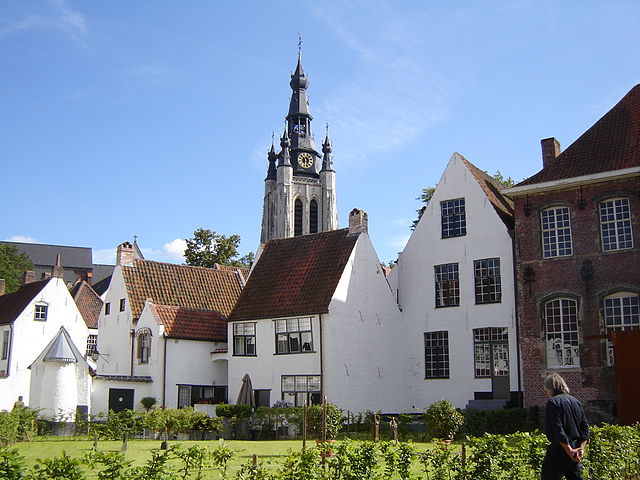The Beguines and the Beghards were Christian lay religious orders that were active in Western Europe, particularly in the Low Countries, in the 13th–16th centuries. Their members lived in semi-monastic communities but did not take formal religious vows; although they promised not to marry "as long as they lived as Beguines", to quote an early Rule of Life, they were free to leave at any time. Beguines were part of a larger spiritual revival movement of the 13th century that stressed imitation of Jesus' life through voluntary poverty, care of the poor and sick, and religious devotion.
Beguine of Ghent. Excerpt from a manuscript of the beguinage of Sint-Aubertus, Ghent, c. 1840.
Print of a Beguine in Des dodes dantz of Matthäus Brandis, Lübeck 1489.
A house in Bad Cannstatt formerly used as a beguinage. It was built in 1463 and restored in 1983.
Béguinage of St Elisabeth, Kortrijk
Catharism was a Christian quasi-dualist or pseudo-Gnostic movement which thrived in Southern Europe, particularly in northern Italy and southern France, between the 12th and 14th centuries.
Denounced as a heretical sect by the Catholic Church, its followers were attacked first by the Albigensian Crusade and later by the Medieval Inquisition, which eradicated the sect by 1350. Many thousands were slaughtered, hanged, or burnt at the stake, sometimes without regard for "age or sex."
War in heaven. Illustration by Gustave Doré
St. Paul, by Valentin de Boulogne.
The Fall of the Rebel Angels by Hieronymus Bosch
Painting by Pedro Berruguete portraying the story of a disputation between Saint Dominic and the Cathars (Albigensians), in which the books of both were thrown on a fire and Dominic's books were miraculously preserved from the flames.








